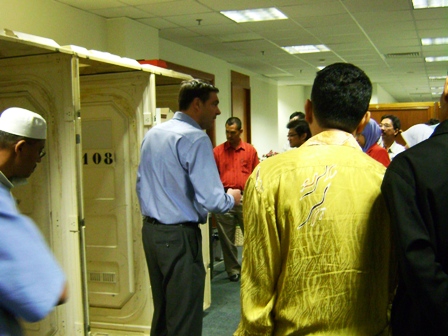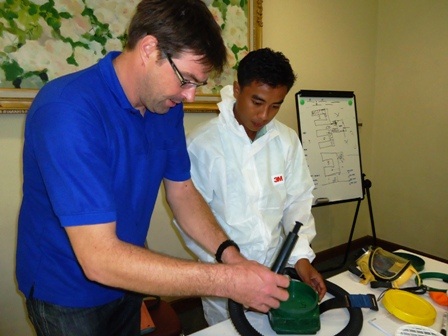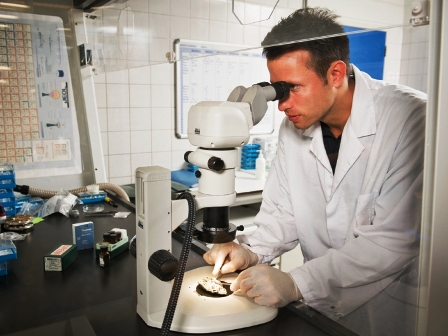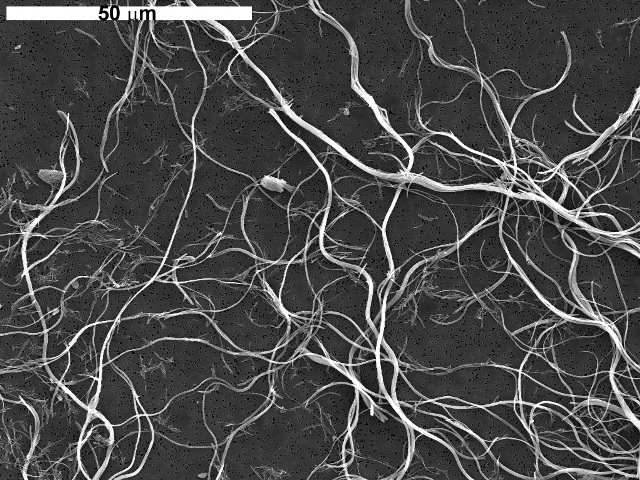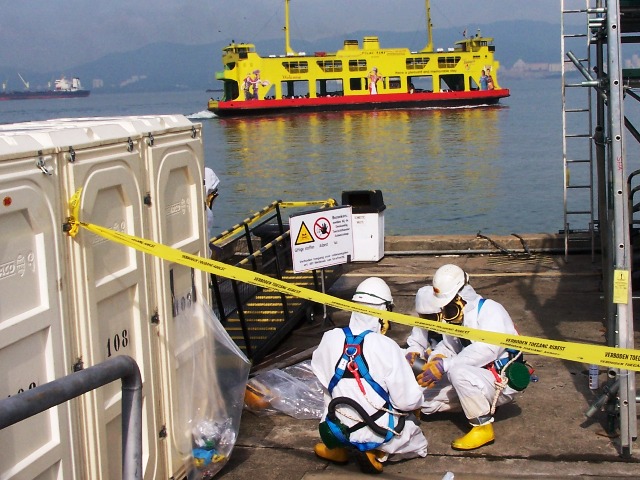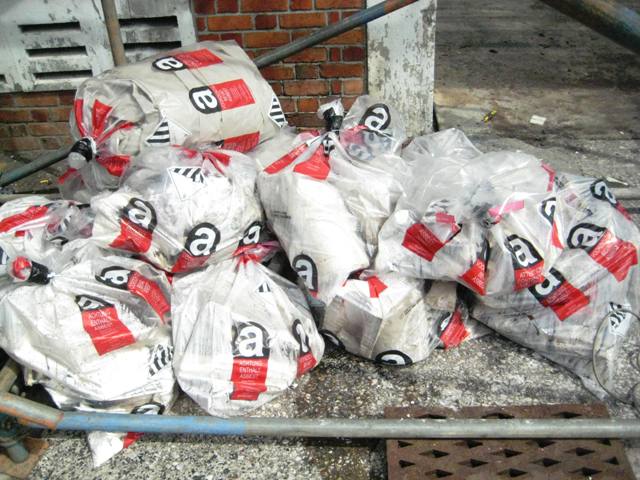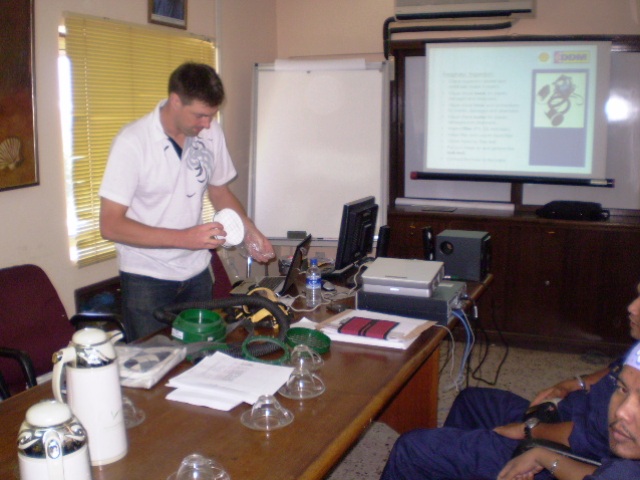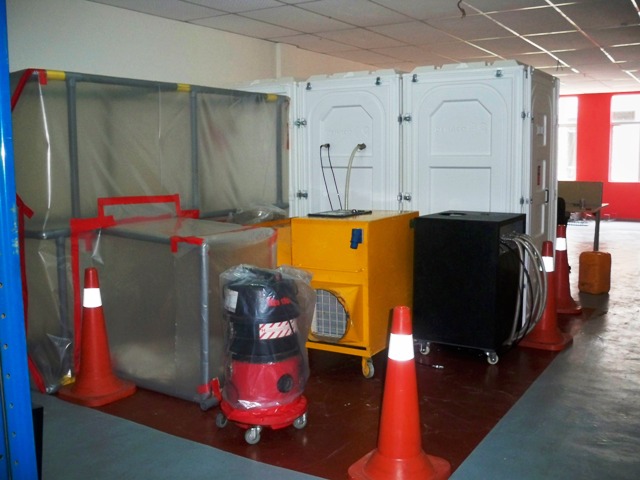One of the key stages to managing asbestos effectively is to identify the type, condition, location and extent of asbestos containing materials. In order to manage asbestos; you need to know you have it.
Our Surveyor delivers a highly professional service and is certified to SC540 (Dutch/EU) standards and has extensive surveying experience. We follow the HSG264 (Second edition) guidelines during the inspection and for the final report.
Each survey issued will consist of a full written report with detailed inventory of the location and referenced photographs which detail asbestos material found or are suspected to be present. This ensures the ease of reading and accuracy. We endeavor to conduct our surveys at your convenience in an efficient manner and with minimal disruption. We can also offer a fast turnaround on surveys and can present our findings in both electronic and hard copy formats for your convenience.
AAAS has extensive experience in managing asbestos for clients in various industries and sectors. We advise clients on the most pragmatic, efficient and operationally advantageous way to manage asbestos, without compromising on safety issues.
Additionally, AAAS can ensure continuity of compliance by conducting regular Risk Register Inspections on the condition of asbestos materials in Industrial Facilities, Marine Vessels, Commercial Properties and Homes. Our consultants can produce the essential management documentation required to ensure compliance and the smooth operation of a building, or portfolio of buildings, when dealing with asbestos matters and planned works.
Our areas of expertise include:Rapid On-Site Asbestos Analysis by MicroPHAZIR AS
Detecting asbestos-containing materials (ACMs) in homes and commercial buildings prior to demolition or renovation is critical to prevent asbestos exposure. Currently, asbestos detection is limited to accredited lab based analysis such as polarized light microscopy, transmission electron microscopy and x-ray diffraction. Lab-based tests are costly and can become even more expensive if a quick turnaround is required.
The Thermo Scientific microPHAZIR AS handheld analyzer is a powerful tool that enables in-field rapid screening and identification of all types of regulated asbestos fibers. The handheld near infrared analyzer is completely self-contained and can perform accurate on-site analysis in seconds. It’s Key benefits Include:
Asbestos Analysis By Polarized Light Microscopy (PLM)
The Laboratories we work with normally perform bulk sample analysis by polarized light microscopy (PLM), which uses an optical microscope to measure various optical properties of minerals/materials observed. All minerals possess certain uniquely identifying optical properties. A few examples of these are: refractive index, sign of elongation, and extinction angle. Two types of asbestos may possess the same sign of elongation and extinction angle but have differing refractive indexes. If the analyst measures enough of the optical properties they can positively identify whether a mineral is asbestos and what type of asbestos it is. For asbestos the most important optical property is refractive index. PLM is carried out in compliance with (NIOSH 9001).
Asbestos Analysis by X-Ray Diffraction (XRD)
Asbestos analysis by X-ray diffraction (XRD) is an alternative method to polarised light microscopy (PLM) for the identification of asbestos fibres. XRD can successfully deal with a variety of building materials and may also be used for qualitative measurements of asbestos content that are precise and unbiased. XRD is commonly used to analyse materials with a low asbestos concentration such as vinyl tiles, mastic and glues.
Samples to be analysed by XRD are first ground to fine powder and then compressed into a preparation slide to be analysed using X-ray diffraction where the crystallographic structure and grain size are characterised to determine the abundance of asbestos fibres within the material.
Asbestos Analysis by Transmission Electron Microscope (TEM)
Transmission electron microscopy (TEM)is a high resolution microscopy technique which is useful in the examination of fine material. It works by firing a beam of electrons through an ultra-thin specimen. The interaction of these electrons and the specimen create an image which can be magnified and focused onto an imaging device. TEM is advantageous in the analysis of asbestos fibres as it allows for a far greater magnification and resolution than standard polarised light microscopy techniques.
The bulk material is ashed in order to homogenise the bulk material and remove any organic materials that may cause incorrect data. This is then added to distilled water and sonicated to ensure equal distribution of particles. A drop of this sample is then placed on a carbon-coated copper grid. Analysis of these grids produces images that allow accurate determination of the presence of asbestos fibres.
Asbestos Air Monitoring
Asbestos air monitoring involves sampling airborne asbestos fibres to assist in assessing the exposure to a hazardous substance or the effectiveness of implemented control measures during asbestos removal works. Although asbestos air monitoring is not always necessary during the removal of non-friable asbestos containing materials, it is nonetheless good occupational hygiene practice. Asbestos air monitoring should be conducted in accordance with the Guidance Note for Membrane Filter Method for Estimating Airborne Asbestos Dust [NIOSH 7004].
Asbestos air monitoring should be performed whenever asbestos containing materials are being removed, to ensure the control measures are effective, however air monitoring requirements will vary depending on the types of asbestos being removed, the location and position of the asbestos, the use of enclosures and whether the removal work is within a building or outside.
To determine the airborne asbestos fibre concentration, a sample of air is obtained by drawing a measured quantity of air through a membrane filter by means of a sampling pump. The filter is then transformed from an opaque membrane into a transparent, optically homogeneous specimen. The fibres are sized and counted through the use of a phase contrast microscope and an eyepiece graticule. The result is expressed as fibres per millilitre (mL) of air, calculated from the number of fibres on the filter and the measured volume of air sampled.
At AAAS, we take our removals seriously. We adhere and follow the guidelines below when conducting abatement projects.
Our company guidelines for handling and removing asbestos when on site:OUTDOOR Removal Method:
Decontamination Unit (DeCon):Barricading:
Handover:
INDOOR Removal Method:
Containment:Decontamination Unit (DeCon):
Barricading:
Handover:
The disposal of asbestos should be done in a way that it is harmless to both humans and the wider environment. Our team of asbestos disposal experts will safely remove the material from your property and discard it in a safe way, and which will adhere to all relevant legislation and environmental constraints. Here In Malaysia, we work together with Kualiti Alam Sdn Bhd in compliance with Malaysian Laws on scheduled waste. Thanks to our skilled team and specialized techniques, we're able to dispose of asbestos on almost any scale, whether it's from domestic, commercial properties, industrial premises or offshore facilities.
Our team immediately safely double packs the asbestos waste and works with the relevant authorities to safely dispose of it. The packing and marking of asbestos waste is done following strict guidelines and procedures and our packing materials are of the best quality. Our teams of experts are equipped to think out of the box by engineering and innovating packing solutions for difficult or tricky disposals. Asbestos disposals should always be carried out by professionals as certain guidelines and procedures have to be adhered to. All our asbestos waste is dumped into dedicate double lined land-fills for scheduled waste. Due to the fire retardant properties of asbestos it is forbidden to incinerate or burn asbestos waste. This is also applied to the consumables that we use on the jobsite. All AAAS waste is clearly marked with appropriate international warning and identification signs. It is not recommended to remove or dispose of asbestos by yourself.
For more details on our packing solutions, stickers, waste identification signs and glovebags please refer to our supplies and solution tab.
Our Company provides 4 hour course in “Asbestos Awareness” and a three day training course in “Safe Handling of Asbestos” for third parties. Training is held at our facility based in the beautiful & historical city of Melaka.
Asbestos Awareness Course- A course that helps the participant to:Safe Handling of Asbestos Course- Participants will have one day of theory, another day of practical training with real equipment and real life simulations, and a full day of theory and practical exam. The participants will be trained on:
Asbestos awareness training is for tradesmen, maintenance workers, estimators, quantity surveyors, project managers, site supervisors, property surveyors, installation engineers and anyone else who may disturb asbestos whilst carrying out their job. Many employers also find that workers and staff who occupy buildings that contain asbestos also benefit from this asbestos awareness training and are reassured by it. AAAS can develop an Asbestos Awareness Training program suited to your needs, understanding your requirements as a client or contractor. Training can be also carried out at your own premises or a venue of your choice should you require it.


